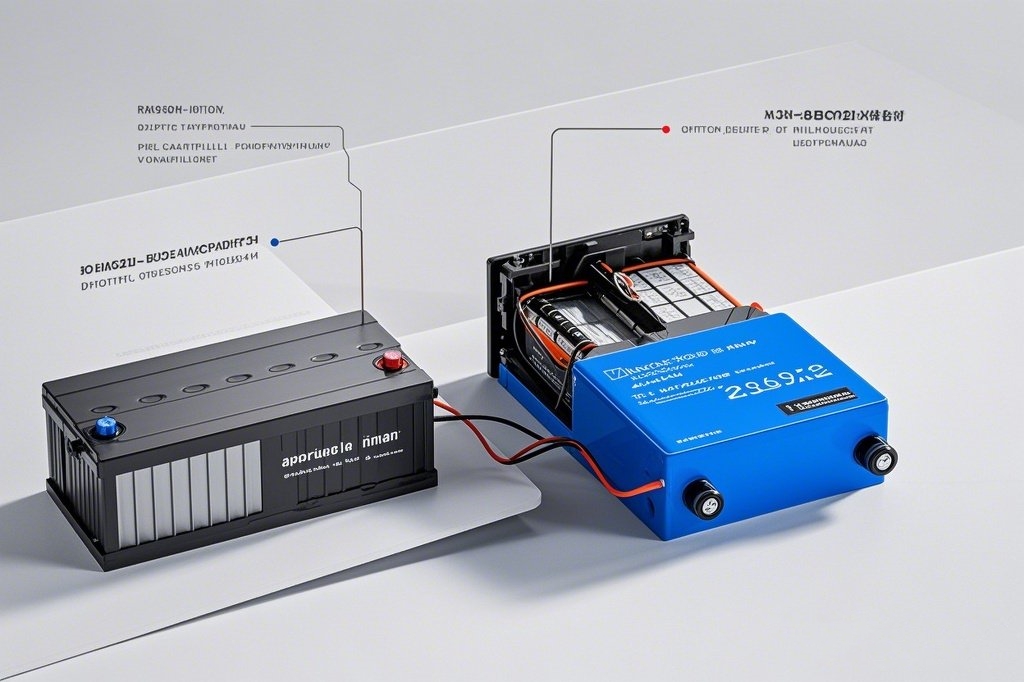





+86-13828714933

rome_jia@yabopower.com
Lead-Acid Battery VS Lithium Iron Phosphate Battery
来源:
|
作者:Valarie
|
发布时间 :2024-12-18
|
40 次浏览:
|
Share:
Lead-Acid Battery VS Lithium Iron Phosphate Battery
In the ever-evolving world of energy storage, two types of batteries stand out for their widespread use: lead-acid batteries and lithium iron phosphate batteries (LiFePO4 Batteries) . Both have their distinct advantages and limitations, and their role in powering everything from electric vehicles to solar energy storage systems is undeniable. However, as the world shifts toward more sustainable and efficient energy solutions, LiFePO4 batteries are rapidly gaining ground over their traditional counterparts.

The Age-Old Dominance of Lead-Acid Batteries
For decades, lead-acid batteries have been the go-to choice for various applications, from automobiles to backup power systems. Their relatively low upfront cost and simple construction have made them a popular choice for budget-conscious consumers. Additionally, lead-acid batteries have a long history of proven reliability, making them a trusted option for many industries.
However, lead-acid batteries come with significant drawbacks. One of the most notable disadvantages is their limited energy density, which translates to shorter runtimes and larger, heavier battery units. They also suffer from lower cycle life, often requiring frequent replacements.
For example, while a LiFePO4 battery can last for over 3,000 charge cycles, a typical lead-acid battery may only offer between 300 to 500 cycles.
Another drawback is their environmental impact. Lead-acid batteries contain toxic lead and sulfuric acid, which pose significant risks to the environment if not disposed of properly. Recycling rates for lead-acid batteries are relatively high compared to other battery types, but concerns about lead pollution remain a major issue.
The Rise of Lithium Iron Phosphate batteries (LiFePO4 Batteries)
In contrast, LiFePO4 batteries are seen as the next generation of energy storage solutions. LiFePO4 is a type of lithium-ion battery that uses iron phosphate as its cathode material, offering several key advantages over traditional lead-acid batteries. These advantages are driving the increasing adoption of LiFePO4 batteries across various sectors, from renewable energy to electric vehicles.
One of the primary benefits of LiFePO4 batteries is their higher energy density. This means they can store more energy in a smaller and lighter package, making them ideal for portable applications like portable power stations and electric vehicles (EVs). Unlike lead-acid batteries, which require a large amount of space and weight to store relatively less energy, LiFePO4 batteries offer more efficient power storage without compromising on size or portability.
LiFePO4 batteries also outshine lead-acid batteries in terms of cycle life and durability. With the ability to withstand over 3,000 charge cycles, LiFePO4 batteries are a far more long-lasting solution. In contrast, the shorter lifespan of lead-acid batteries can result in higher long-term costs, as they need to be replaced more frequently.
Furthermore, LiFePO4 batteries are more environmentally friendly. Unlike lead-acid batteries, they do not contain toxic heavy metals like lead, making them a safer choice for the environment. This aligns with the growing demand for green, sustainable solutions, especially in industries such as solar energy and electric vehicles.
Key Differences Between Lead-Acid and LiFePO4 Batteries
·Energy Density: LiFePO4 batteries offer a significantly higher energy density, meaning they can store more energy in a smaller, lighter package compared to lead-acid batteries.
·Cycle Life: LiFePO4 batteries typically last longer, offering between 3,000 to 5,000 cycles, whereas lead-acid batteries often need to be replaced after only 300 to 500 cycles.
·Cost: While LiFePO4 batteries have a higher initial cost, their longer lifespan and better performance make them more cost-effective in the long run. Lead-acid batteries, on the other hand, have a lower upfront cost but require more frequent replacements.
·Environmental Impact: LiFePO4 batteries are safer for the environment as they do not contain hazardous substances like lead. Lead-acid batteries, while recyclable, pose environmental risks if not disposed of properly.
·Efficiency: LiFePO4 batteries are more efficient in terms of charge and discharge cycles, providing more consistent power output over time, while lead-acid batteries tend to degrade more quickly.
The Future of Energy Storage
As the global demand for clean, efficient, and reliable energy storage continues to grow, LiFePO4 batteries are poised to become the preferred choice across a wide range of applications. From solar energy storage systems to electric vehicles, LiFePO4 batteries offer the performance, efficiency, and environmental sustainability that consumers and businesses alike are looking for.
At YABO Power, we are committed to providing high-performance energy storage solutions, focusing on LiFePO4 batteries and lithium-ion battery technologies. With over 20 years of experience in the industry, we are at the forefront of the transition to cleaner, more efficient energy storage systems that support both the environment and the growing energy demands of the future.
In conclusion, while lead-acid batteries have served their purpose for many years, the future lies with LiFePO4 batteries. With their superior efficiency, longer lifespan, and minimal environmental impact, LiFePO4 batteries are a clear choice for the next generation of energy storage solutions.
----author: Valarie

Shenzhen Yabo Power Technology Co., Ltd.
Quick Links
Product Categories
Contact us
rome_jia@yabopower.com
+86-13828714933
No.252 Pinglong East Road, Fenghuang Community, Pinghu Street, Longgang District, Shenzhen
© 2024 Shenzhen Yabo Power Technology Co., Ltd. All Rights Reserved. Designed by Erge







